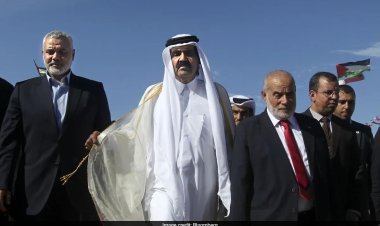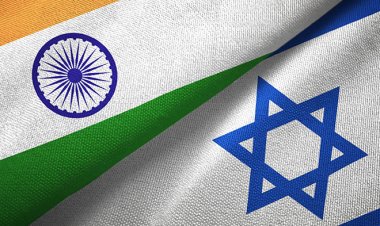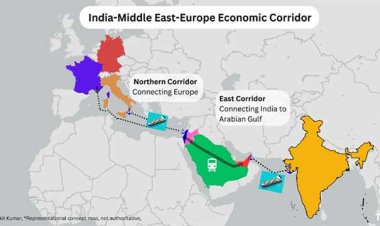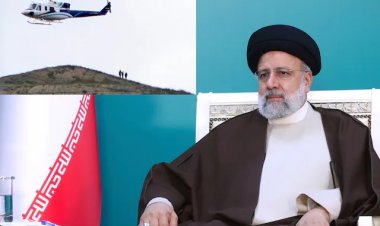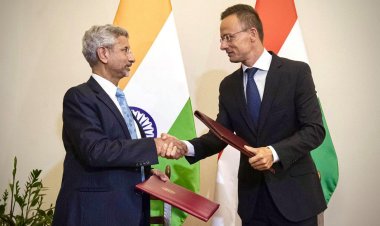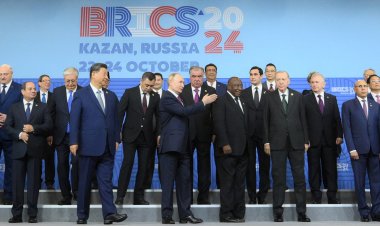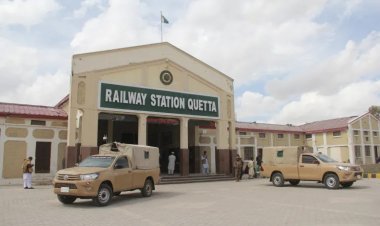Economics of Defence Trade in India’s ‘Link West’ Policy
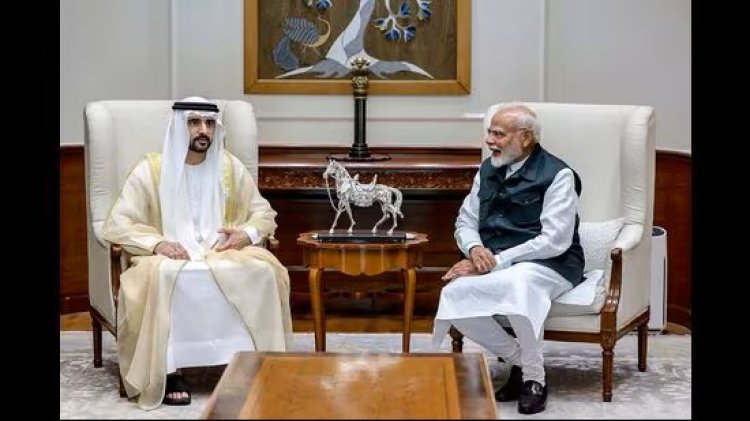
Analysis
By Angana Guha Roy
Saudi Arabia signed a defence pact with Pakistan, India’s nuclear counterpart in South Asia, on September 17 this year drawing attention of the strategic community across the region. While Saudi Arabia has assured no implicative change in its strategic partnership with India, a closer look at India’s defense trade partnerships in the region is essential to understand India’s trajectory of strategic presence in the region.
West Asia holds major strategic and economic importance for India under the ‘Link West’ policy. Particularly, India's defense relationship with the Middle East is transforming from a major importer of Israeli systems to becoming a significant exporter of indigenous products to GCC nations. This shift reflects India's growing defense manufacturing capabilities and ambition for self-reliance, allowing it to supply the region while still sourcing specific advanced technologies from partners like Israel.
India's defence trade with the Middle East is a critical component of its broader strategic partnerships in the region, driven by energy security, counter-terrorism cooperation, and economic diversification. As the world's largest arms importer (accounting for 9.8% of global imports in 2019-23, per SIPRI data), a period marked by a diversification from its traditional main supplier, Russia. India has historically imported advanced systems from Middle Eastern suppliers like Israel, while increasingly exporting indigenous defence products to Gulf Cooperation Council (GCC) nations.
This bilateral flow supports India's "Make in India" initiative for self-reliance and aligns with Middle Eastern countries' push for local manufacturing under visions like Saudi Arabia's Vision 2030 and the UAE's Offset Program. Trade volumes are growing, with India's overall defence exports reaching $2.63 billion in FY 2023-24 (a 32.5% YoY increase), signifying a 30-fold growth over the past decade. Recent geopolitical developments, including the September 2025 Saudi-Pakistan mutual defence pact and its impact on joint projects, are under close watch.
The Middle East absorbed 27% of global arms imports in 2020-24, down 20% from prior periods due to local production pushes, but demand for joint ventures remains high. A cursory glance at certain prominent aspects of India’s defence trade trajectory with the Middle East:
|
Aspect |
Key Data (Recent Trends) |
Implications for India-Middle East Trade |
|
Global Arms Imports |
High demand in the Gulf for Indian tech offsets import reliance. |
|
|
India's Defence Exports |
$2.5B in FY23-24, Middle East subset growing via Joint Ventures |
Exports to UAE/Saudi Arabia Increasing; includes BrahMos components. |
|
Bilateral Trade Volume |
Israel-India: Deepened 30+ years; $ multi-billion annually |
Co-production (e.g., drones) boosts mutual supply chains. |
|
GCC Focus |
Joint R&D/manufacturing pacts; e.g., UAE-India CEPA (2022) |
Enhances India's role in regional security markets. |
|
Major Players and Deals |
Israel |
India procures Hermes drones, Barak-8 missile systems, and SPICE precision-guided munitions. Israel-India defence trade is valued at billions annually, with a focus on technology transfers. Joint ventures like the Kalyani Rafael Advanced Systems (KRAS)produce missile systems and anti-tank weapons in India. |
|
Major Players and Deals |
UAE |
India supplies coastal surveillance systems, patrol vessels, and small arms. The UAE is a key partner under the Comprehensive Economic Partnership Agreement (CEPA).Adani Defence and Aerospace signed MoUs in 2024 for local |
|
Major Players and Deals |
Saudi Arabia |
India exports small arms and is exploring BrahMos missile sales. Saudi’s Vision 2030 emphasizes local manufacturing, aligning with India’s co- production offers. India’s economic ties with Saudi Arabia continue to be strong. Current developments like the Pakistan-Saudi Arabia Defence pact and its implications on regional dynamics are under review. |
|
Major Players and Deals |
Other GCC Nations |
Qatar and Oman have shown interest in Indian naval systems |
|
Recent Developments (2024-2025) |
UAE-India Strategic Dialogue (2024): commitments for co-production of drones and radar systems. BrahMos Exports: Talks with UAE and Saudi Arabia for missile system sales progressed in 2025. Israel-India Joint Venture Expansion: New agreements for AI-based surveillance systems and cybersecurity solutions were signed in 2024. |
India's Imports from the Middle East
Dominated by Israel, which supplied 3.1% of global arms exports in 2020-24, with India as its largest buyer (34% of Israeli exports). Focus areas of arms imports include drones, missiles, and surveillance tech.
Between 2020 and 2024, India ranked as the world's second-largest arms importer, with an 8.3 per cent share of global arms imports. Middle Eastern arms imports decreased by 20% between 2015–19 and 2020–24, with Qatar being the top regional importer and the world's third-largest importer during the latter period, while Saudi Arabia's imports fell by 41%. The United States was the region's largest arms supplier, providing over half of the imports, followed by Italy and France. India's arms imports from the Middle East, Israel’s expertise in drones, missiles, and surveillance systems, which complement India’s needs against border threats from China and Pakistan.
|
Country |
Major Imports/ Deals ( 2020- 2025) |
Notes |
|
Israel |
-Heron and Hermes TP drones (additional units delivered 2020-2023). - Spike anti-tank guided missiles (extended contract in 2021 for 4,000+ units). - Barak-8 (MRSAM/LR-SAM) missile systems (co-produced with DRDO; deliveries 2020-2024). |
Joint ventures like IAI-DRDO for Barak-8 emphasize co-production to reduce import dependency. |
|
UAE |
Minor electronics and radar components (via joint ventures, e.g.,EDGE Group |
UAE focuses more on India's defence exports (e.g., India sold $100M+ in systems to the UAE in 2024). Imports are limited to niche items; emphasis on bilateral exercises like Desert Cyclone (2024). |
|
Saudi Arabia |
|
Relations are strong via the India-Saudi Strategic Partnership Council (meetings in 2025), but Saudi is a net importer itself. The 2025 Saudi-Pakistan pact may indirectly affect India-Saudi defence ties, though Saudi Arabia confirmed no change in bilateral ties. |
|
Other (e.g., Qatar, Oman) |
- Spare parts for joint exercises (e.g., Al Nagah with Oman, 2024). - No significant procurements. |
Limited to logistics support; these countries import more from India (e.g., Oman bought BrahMos missiles in 2024). |
Israel's exports to India rose due to shared concerns over China and Iran. The 2020 Galwan clash with China boosted Israeli drone and missile imports in India. India is reducing reliance on imports through five 'Positive Indigenization Lists' (2020-2024), embargoing 5,000+ items.
According to the Stockholm International Peace Research Institute (SIPRI) report, the Middle East saw a 20% decrease in its arms imports between the periods of 2015–19 and 2020–24. Despite this overall decline, the Middle East remained a major arms-importing region, with some countries like Qatar significantly increasing imports, while others, such as Saudi Arabia, saw a drop in their import levels.
India's Exports to the Middle East
India’s defence exports to GCC countries (e.g., UAE, Saudi Arabia) is increasing. In the bigger scheme of things, it demonstrates India’s expanding footprints amid global supply chain shifts. Israel's conflict with Hamas and regional tensions (e.g., the September 2025 Israeli strike on Qatar) have indirectly boosted demand for defensive technologies, though India's exports to Israel have sparked some Arab concerns.
|
Country |
Key Deals/Exports (2023-2025) |
Details |
|
Israel |
India’s exports to Israel rose post-2023 Gaza conflict but drew criticism. India remains Israel's largest arms buyer is fostering joint R&D. |
|
|
Saudi Arabia |
Signed in 2024 by Munitions India Limited (a Defence Public Sector Undertaking).Includes joint naval/land exercises (e.g., 2023 Al-Mohed exercise). Saudi participation in Aero India 2025 signals deeper ties. |
|
|
United Arab Emirates (UAE) |
||
|
Oman |
Strategic port access drives ties; joint exercises |
|
|
Qatar |
No significant documented defence exports to Qatar in the recent period of 2024-2025 |
Defence cooperation in areas like joint exercises and training exchanges |
Challenges and Way Forward
India’s defence trade with the Middle East is poised for growth, leveraging strategic partnerships and economic synergies. India's defence trade with the Middle East has expanded significantly, with imports from Israel dominating (e.g., drones, missiles) and exports to GCC nations (e.g., UAE, Saudi Arabia) growing via joint ventures for systems like BrahMos missiles and patrol vessels. However, as of September 2025, several structural, geopolitical, and economic hurdles threaten this momentum.
Exports strengthen India's "multi-alignment" in the Gulf, countering issues such as Pakistan-Saudi pacts (e.g., September 2025 mutual defence agreement) while maintaining Israel ties. Other factors, like escalating Israel-Iran tensions, could complicate sales; India must navigate without alienating partners.
Ongoing Middle East conflicts, particularly the Israel-Hamas war and Israel's September 9, 2025, strike on Doha (Qatar), have eroded US security guarantees for GCC states, prompting diversification but also instability that hampers trade. India, being an advocate of dialogue-driven conflict resolution, can hold the momentum and strengthen its reliability as an ‘understanding’ counterpart in the continent. India has maintained a neutral posture between Israel (top supplier) and Arab states, while managing Iran-Saudi tensions and Yemen conflicts.
The India-Middle East-Europe Economic Corridor (IMEC), a priority for India signed in 2023, aims to boost defence logistics and trade but faces delays due to Gaza hostilities. Disruptions in sea lines of communication (e.g., Red Sea attacks) threaten energy imports (53.89% of India's crude from the region in January 2025) and defence supply chains. India must navigate neutrality between Israel (top supplier) and Arab states, while managing Iran-Saudi tensions and Yemen conflicts.
|
Challenges |
Specific Issues |
Impact on India-Middle East Defence Trade |
|
Geopolitical |
Saudi-Pakistan pact; India-Pakistan May 2025 conflict |
Thorough review of GCC partnerships to avoid risks of nuclear escalation spillover |
|
Regional Instability |
Israel-Gaza war; Red Sea disruptions; IMEC delays |
Halts logistics, raises costs; might of global arms imports to the region |
|
Industrial |
Production lags; tech transfer gaps; competition from China/West |
Limits export target limits; might amount to slowing down of Joint Ventures. |
|
Economic/Diplomatic |
Bottlenecks in Israel-Arab ties; |
Increases diplomatic maneuvering; exposes supply chain risks |
India's $15 billion defence export goal by 2026 requires it to address the challenges judiciously, particularly in the GCC, where demand for co-production remains high. Opportunities persist—e.g., the UAE's 2024 MoUs for drones and the EU's 2025 roadmap for tech-defence ties—but require proactive diplomacy. For India, a close call on how the current inter-regional pacts (case in point: Pakistan - Saudi Arabia Defence Pact) affect its export and trade goals needs to be assessed.
Amidst the complexities arising from regional and geopolitical shifts, other components of India’s expanding ties with Middle East countries, including the Indian diaspora, will play a significant role in continuing the momentum of the strengthening ties.
Disclaimer: This paper is the author’s individual scholastic contribution and does not necessarily reflect the organisation’s viewpoint.


